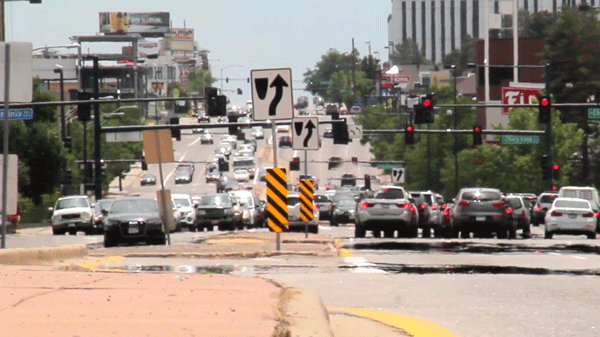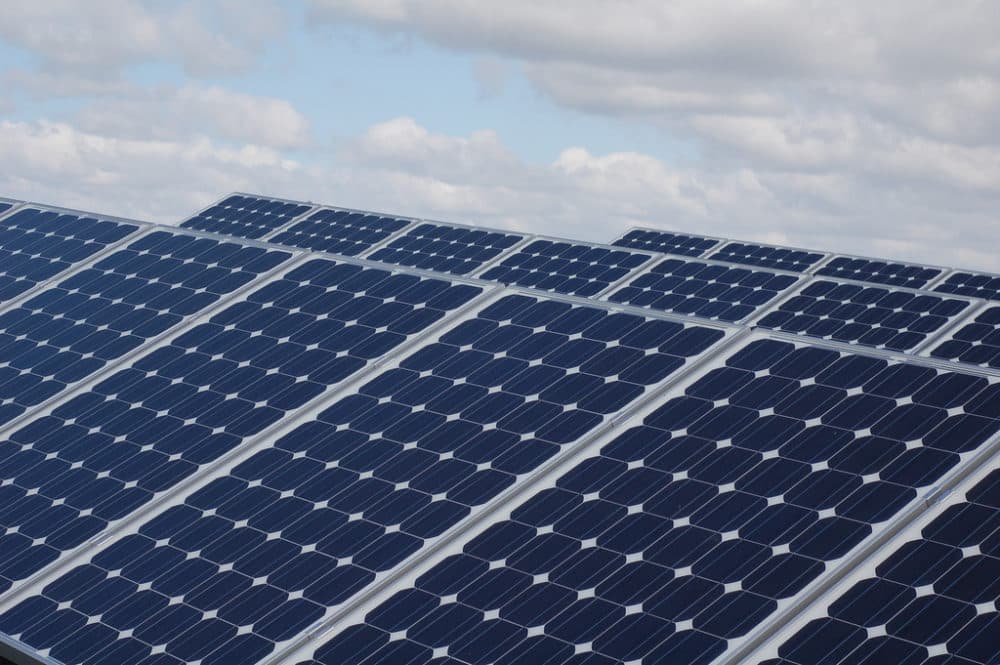
If humanity doesn't slow down its emissions of greenhouse gases, Denver could see a month of 100-degree days every year by the end of this century.
That's according to a study publicized by the city of Denver today, laying out a challenge that cities and states increasingly are taking into their whole hands. In this post, we'll explain how the city and state are preparing for that potential future.
"Cities can do a lot. We are 2 percent of landmass globally, but we account for 70 percent of greenhouse emissions," said Liz Babcock, manager of air, water and climate for the city.
"When we make our buildings significantly more energy efficient, when we improve our transportation systems, there is a lot we can accomplish."
Denver's hottest summer on record was 2012, when there were just six days above 100 degrees. That could be the norm by the 2040s, according to the new report conducted by the Rocky Mountain Climate Organization and released by the city. And by the late century, the norm could be 34 of those triple-figure days each year.
Action on climate change could dramatically reduce those figures, according to the city's news release.
The report has been in the works for about six months, but its publication comes in the wake of President Donald Trump's decision last week to walk away from the global Paris Agreement on climate change. City and state leaders across the country have since banded together in new alliances to take on climate change themselves.
In Denver, Mayor Michael Hancock has signed on with a group of cities in support of carbon reduction. Gov. John Hickenlooper hasn't yet joined other states in the new U.S. Climate Alliance, but he has said he supports its goals.
So, with pressure mounting for cities and states to do more, we figured it would be a good time to assess what Colorado has and hasn't done, and how that compares to other states around the U.S.
What Colorado and Denver are doing:
Renewable energy: In 2004, Colorado voters agreed that energy producers should have to get some of their power from renewable sources. It was the first time that such a program was instituted by referendum, because Colorado really loves to pass things by popular votes.
The state requires that investor-owned utilities make 30 percent of their power from renewable sources by 2020. A total of 29 states have similar requirements, according to the National Conference of State Legislatures.
Today, one of the largest wind farms in the country is starting construction in Elbert County.
Energy efficiency: The city of Denver will soon start report on the energy efficiency of commercial and residential buildings larger than 25,000 square feet. The first data should be available in an online portal for the public this fall.
Colorado also requires and incentivizes utilities to push consumers toward energy efficiency.
Electric vehicles: Colorado makes buying an electric vehicle cheaper than almost anywhere else. The state offers a $5,000 tax credit to buyers, second only to Louisiana, according to Tesla.
Planning: City of Denver staff have started exploring how climate change will affect specific people and places in Denver. Early results show disproportionate health impacts for communities in western and northern Denver, as we previously reported.
The city now is incorporating those ideas in its overall planning. In the future, Babcock said, it will examine ways to encourage an electric transportation network and other ways to get gas cars off the roads, along with more efficient buildings, cooling centers and other strategies.
Colorado also has a Climate Action Plan that calls on the state to prepare for drought; to reduce carbon dioxide emissions; and to promote lower-impact methods for transportation and agriculture.

The state and city's goals:
Greenhouse gas goals for Denver: The city of Denver aims to scale down to 1990 levels by the year 2020. Mayor Michael Hancock established the goal in 2013. As of that year, the largest portion of Denver's carbon emissions were from commercial properties, followed by residential properties.
Denver already is below 2005 levels, thanks mostly to Xcel Energy's transition to natural gas and renewables. That change puts Denver within reach of the 1990 goal, according to Babcock.
The city also is working to create a new goal of 80 percent carbon-emission reductions by 2050, Babcock said.

Greenhouse gas goals for Colorado: Former governor Bill Ritter in 2007 called for reductions of 20 percent by 2020 and 80 percent by 2050, but there's little mention of that goal in state politics today.
"Gov. Ritter set forth this greenhouse gas reduction plan, but there’s nothing binding about it, and it’s not typically referred to as something we do at the state level," said Erin Overturf, chief energy counsel for Western Resource Advocates.
Gov. Hickenlooper last year floated the idea of a 35 percent cut to greenhouse pollution from power plants by 2030, but the idea quietly disappeared after oil-and-gas backlash. We've asked Hickenlooper's office for specifics on his goals for carbon reduction.
Update: Colorado has joined the U.S. Climate Alliance and set specific greenhouse gas reduction goals.
What they're not doing:
Carbon pricing:
As the Los Angeles Times reported, California and a number of East Coast states have instituted "carbon pricing" markets, which create financial incentives for groups to reduce emissions.
They generally allow companies to meet carbon limits by paying other groups to lower or mitigate carbon emissions. (It's complicated; check out this story about how one company is using it to replant burned forests in Colorado.)
This kind of system hasn't been discussed much at the government level in Colorado. It was anticipated that it would be a part of the Clean Power Plan, but that Obama effort is dead in the water.
Fuel standards:
California and Oregon have introduced requirements for "cleaner blends of gasoline to reduce greenhouse gas emissions," the L.A. Times reported.
"That hasn’t really been a high priority in Colorado in terms of a sort of a mandate like that," Overturf said.
"Those types of policies don’t tend to play that well in the West, when you get away from the coast."
Overall, though, Overturf described Colorado as a can-do state that has stayed ahead of the curve thanks to pragmatic politics.
"At least in the energy sphere, the electricity sphere -- not to toot our own horn, but we’re really good at talking to each other. We’ve been able to avoid some bad outcomes by trying to find common ground," she said.
And nationally, she added, "it feels like the conversation is finally changing to a more realistic exploration of the risk."











